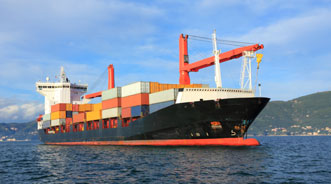How a Deflating Export Market Impacts Used-Car Values

Just a few years ago, there were a group of vehicles commanding 70- to 80-percent sales rates at the auction and fetching bids so high that many dealers were priced out of the market.
These days, however, this same group of vehicles is only generating sales rates between 15 percent and 25 percent in the lanes. And pricing has fallen dramatically, thanks to changes in a specific slice of the business.
It’s called the export market, and while the impact from this slice of the industry is rarely talked about, its changing tide is moving in on used-car values, says Juan Flores, director of operations for the Trade-In Marketplace at AutoTrader.com
Flores talked to Auto Remarketing on Friday about the extreme softening in the export market and its impact on used-car pricing.
Less than a handful of years ago, a weak U.S. dollar helped create profit opportunities for exporters to purchase high-end, high-mileage units at the auction in the U.S. and ship them to places like Egypt, Kazakhstan, Nigeria and Russia, Flores noted.
Though he wasn’t aware of the exact mix, cars came into North Africa either by way of the Eastern Bloc or by being sent directly to Africa, said Flores, who also noted that vehicles were also being sent to the Middle East region.
The people who bought these cars in the lanes in America were able to outbid non-exporting dealers, as they had higher ceilings and a lot more wiggle room on their margins. Some examples of vehicles that fell into this bracket were the BMW 7 Series, Cadillac Escalade, Mercedes-Benz’s S500 and G500, and the Toyota Land Cruiser, Flores said.
Then, things changed, not the least of which was the political turmoil in North Africa, of course.
“Today, their dollar has strengthened; there is international instability … some of these export markets can’t absorb the same amount of volume as they have in the past,” he said.
To illustrate the impact in the lanes, Flores gave the example of an Escalade.
When the export market was strong, around eight of 10 Escalades that came through the lanes ended up being exports.
Now, maybe one or two of those 10 would be exported.
Granted, there still is a “generally healthy” export market for lower-priced units with less risk. But, this higher-price, higher-mileage class is the one that has more of an impact.
And one of those impacts appears to be a pretty positive one for non-exporting dealers, who are now able to compete for these vehicles in the lanes now that prices have come down.
These dealers, Flores said, have a “higher probability of being to afford them than in the past.”
Joe Overby can be reached at joverby@autoremarketing.com. Continue the conversation with Auto Remarketing on both LinkedIn and Twitter.


